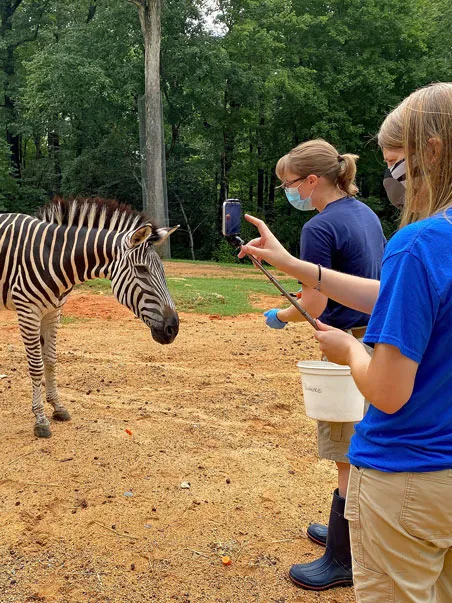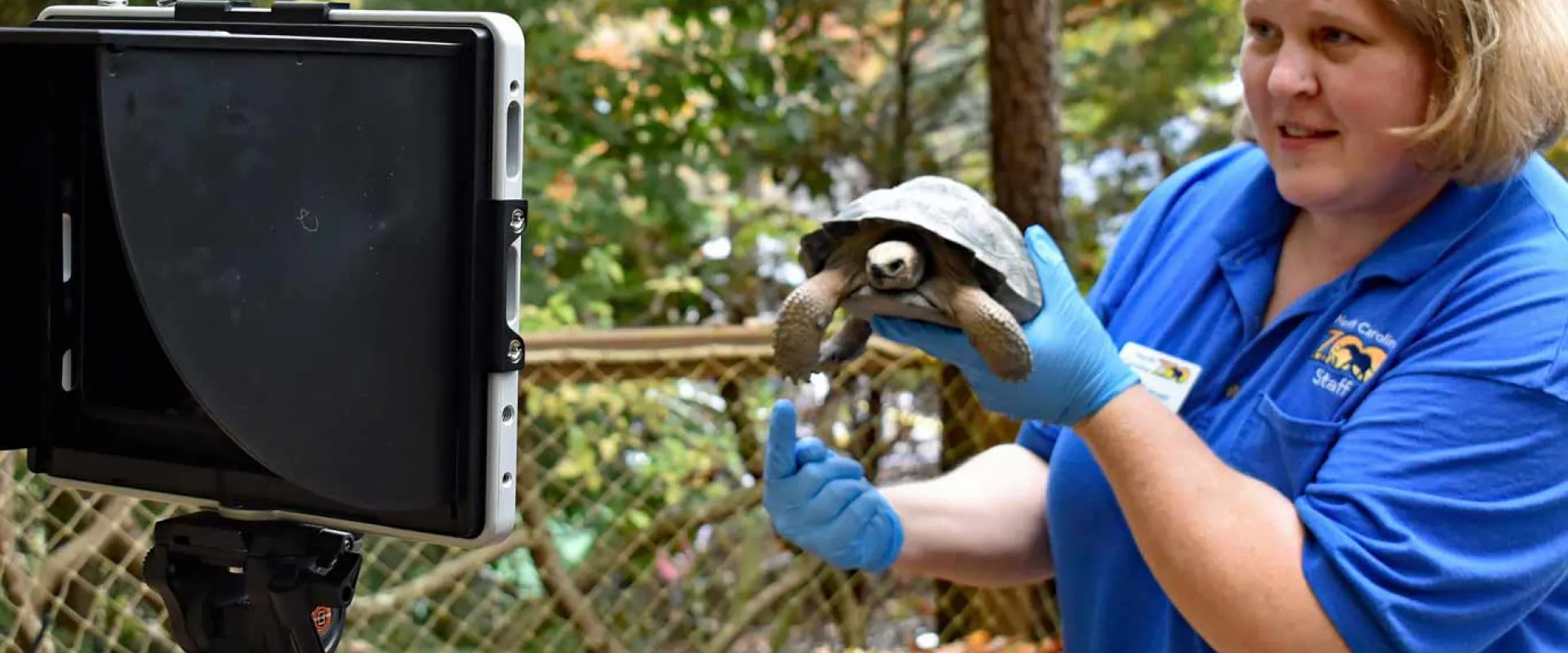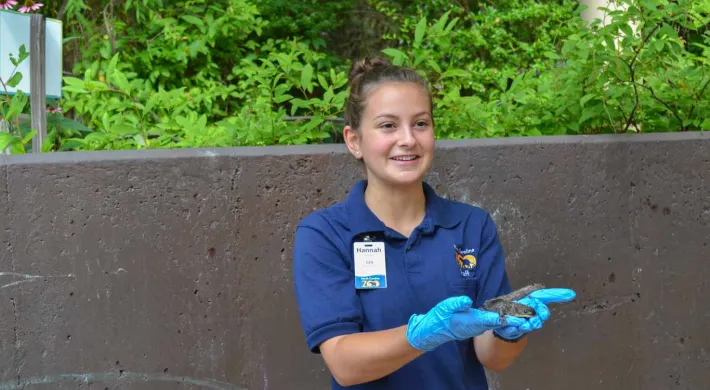
Virtual Classroom Programs
If you would like to purchase a private Zoo Classroom program for your class or group please email or call 336-879-7718.
Things to know
- We will use our Microsoft Teams Meeting/Webinar or your meeting platform for the program.
- Cost is a minimum of $75 for the 45 minute program. Except for our Living with Nature programs which are free for Middle Schools and High Schools.
Available Programs
Animal Architects - Different animals live in different places, all specifically made to help them survive. But have you ever wondered how a nest is made, or why a butterfly uses a cocoon? How do termites make structures taller than four refrigerators stacked on top of one another? Together we explain these architects and how they are so good at creating these wonders.
Animal Wrappers - Not all animals look and feel the same. Why are some things soft and other things slimy? Together we look at the different "wrappers" of animals and use audience observations to explain adaptations. Best for grades K-1.
Animals from the Path - Your guide will take you into the Zoo and introduce you to some of our residents from the path. You will learn more about the individuals and some of the work the Zoo is doing with the species at the Zoo or in the wild. This encounter will be hosted from the public viewing side of the habitat. Examples of animals are cougars, seals, alligators, arctic fox, or lions.
Animals Up Close - Get up close and virtual with our animal ambassadors. Your guide will introduce you to the ambassador(s) and tell you about the species and share their personal history. Your guest could be an ambassador tarantula, frog, salamander, tortoise, snake, rabbit, armadillo, porcupine, lizard, bird or so much more.
Arctic Awareness - Our friends in the arctic can seem otherworldly: how do they survive when it's so different than what we are used to? Explore the adaptations of different arctic animals and how these adaptations ensure their survival even in the coldest winters.
Biodiversity Basics - Designed with 1st graders in mind, we look at the differences between different creatures, why they are present, and what would happen if any of these features changed.
Carolina's Coolest - When you think of the zoo, you likely think of elephants and giraffes and rhinos. While we do have amazing African animals at the North Carolina Zoo, we also have animals that live here in North Carolina that you may have never seen! We will talk about birds, reptiles, amphibians, and all animals that can be found right here in our backyard.
Extreme Living - These superheroes are able to survive extreme conditions! What can live in a volcano? What can survive icy waters? What can live without a drop of water? This program will be sure to bring some cool facts to share with your friends.
Feet, Paws, and Claws - The different feet, paws, and claws of different animals serve a purpose, but why do they all look so different? Discover the differences between our toes.
Living with Nature - Our free program for Middle School and High School students focuses on the conservation work we do at the North Carolina Zoo, whether that be discussing international research, regional conservation, or even just explaining how we can all be better stewards!
Magnifi-senses - All Science starts with using our senses! Together we will use our senses to observe the senses of other animals at work. This program keeps the wow factor, is fast paced, and great for students of all ages, as student observations and comments lead the discussion.
Snakes: Friend or Foe - Snakes are exciting but sometimes scary. Many people will kill a snake on sight, but is this the best response? Are snakes our friends or our foes? Come all levels of snake enthusiasts, from the most hesitant ophidiophobe to the budding herpetologist, we have facts for all.
The 3 Bears - Three bears are in North America: Black bear, Grizzly bear, and Polar bear. How are they different? Using the age-old story of the three bears and goldilocks, we compare these three bears and point out just have different they really are.


